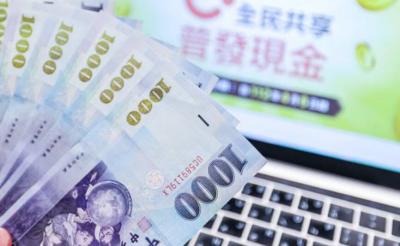A US military expert has written that if Chinese and Japanese forces met in battle over the Diaoyutai Islands (釣魚台), the outcome would be difficult to predict.
“Such a fight appeared farfetched before 2010, when Japan’s Coast Guard apprehended Chinese fishermen who rammed one of its vessels off the disputed islands, but it appears more likely now,” James Holmes, an associate professor of strategy at the US Naval War College, wrote in Foreign Policy magazine this week.
Holmes said that China’s leaders are “clearly thinking about the unthinkable.”
However, Japan would not be a pushover, he wrote.
He said the Japan Maritime Self-Defense Force (JMSDF) has accumulated several pockets of material excellence, such as undersea warfare, and their sailors were renowned for their professionalism.
“If commanders manage their human, material and geographic advantages artfully, Tokyo could make a maritime war with China a close-run thing — and perhaps even prevail,” Holmes wrote.
He said a straightforward China-on-Japan war was doubtful unless Beijing managed to isolate Tokyo diplomatically or Tokyo isolated itself through “foolish diplomacy.”
Barring that, Holmes said a conflict would probably ensnare the US as an active combatant on the Japanese side.
However, discounting politics, a contest between Chinese and Japanese sea power would be no contest in purely numerical terms.
Japan has 48 major surface combatant ships, including light aircraft carriers, guided-missile destroyers, frigates and corvettes and 16 diesel-electric submarines.
The People’s Liberation Army Navy (PLAN) boasts 73 major surface combatants, 84 missile-firing patrol craft and 63 submarines.
“China’s navy is far superior in sheer weight of steel,” Holmes wrote.
However, the PLAN is untested and its quality unsure.
The quality of the JMSDF’s Navy and its human capabilities “could partially or wholly offset the PLA’s advantage of numbers.”
“JMSDF flotillas ply Asian waters continually, operating solo or with other navies. The PLA Navy is inert by comparison,” he wrote.
He said that in general, Chinese fleets emerge only for brief cruises or exercises, leaving crews little time to develop an operating rhythm or learn their profession.
The human edge goes to Japan.
Because China and Japan are close to each other, both countries’ land-based firepower needs to be factored in, Holmes said.
PLA conventional ballistic missiles could strike land sites throughout Asia, putting Japanese assets at risk before they ever left port or took to the sky.
China’s Second Artillery Corps, or missile force, has reportedly fielded anti-ship ballistic missiles able to strike moving ships at sea from China.
However, if Japan forward-deployed Type 88 ASCMs — mobile, easily transportable anti-ship weapons — and missile crews to the islets and to neighboring islands in the Ryukyu chain, its ground troops could generate overlapping fields of fire that would “convert nearby seas into no-go zones for Chinese shipping.”
Holmes concluded that whoever best combined sea, land and air forces stood a good chance of winning a conflict.
“That could be Japan if its political and military leaders think creatively, procure the right hardware and arrange it on the map for maximum effect,” he wrote.
Holmes said Japan would not need to defeat China’s military to win a showdown at sea because it already holds the “contested real estate.”
“If Northeast Asian seas became a no-man’s land, but Japanese forces hung on, the political victory would be Tokyo’s,” he says.
Finally, Holmes said that if China lost much of its fleet in a Sino-Japanese clash — even in a winning effort — Beijing could see its momentum toward world-power status “reversed in an afternoon.”

TRAFFIC SAFETY RULES: A positive result in a drug test would result in a two-year license suspension for the driver and vehicle, and a fine of up to NT$180,000 The Ministry of Transportation and Communications is to authorize police to conduct roadside saliva tests by the end of the year to deter people from driving while under the influence of narcotics, it said yesterday. The ministry last month unveiled a draft of amended regulations governing traffic safety rules and penalties, which included provisions empowering police to conduct mandatory saliva tests on drivers. While currently rules authorize police to use oral fluid testing kits for signs of drug use, they do not establish penalties for noncompliance or operating procedures for officers to follow, the ministry said. The proposed changes to the regulations require

The Executive Yuan yesterday announced that registration for a one-time universal NT$10,000 cash handout to help people in Taiwan survive US tariffs and inflation would start on Nov. 5, with payouts available as early as Nov. 12. Who is eligible for the handout? Registered Taiwanese nationals are eligible, including those born in Taiwan before April 30 next year with a birth certificate. Non-registered nationals with residence permits, foreign permanent residents and foreign spouses of Taiwanese citizens with residence permits also qualify for the handouts. For people who meet the eligibility requirements, but passed away between yesterday and April 30 next year, surviving family members

Taiwanese officials are courting podcasters and influencers aligned with US President Donald Trump as they grow more worried the US leader could undermine Taiwanese interests in talks with China, people familiar with the matter said. Trump has said Taiwan would likely be on the agenda when he is expected to meet Chinese President Xi Jinping (習近平) next week in a bid to resolve persistent trade tensions. China has asked the White House to officially declare it “opposes” Taiwanese independence, Bloomberg reported last month, a concession that would mark a major diplomatic win for Beijing. President William Lai (賴清德) and his top officials

The German city of Hamburg on Oct. 14 named a bridge “Kaohsiung-Brucke” after the Taiwanese city of Kaohsiung. The footbridge, formerly known as F566, is to the east of the Speicherstadt, the world’s largest warehouse district, and connects the Dar-es-Salaam-Platz to the Brooktorpromenade near the Port of Hamburg on the Elbe River. Timo Fischer, a Free Democratic Party member of the Hamburg-Mitte District Assembly, in May last year proposed the name change with support from members of the Social Democratic Party and the Christian Democratic Union. Kaohsiung and Hamburg in 1999 inked a sister city agreement, but despite more than a quarter-century of